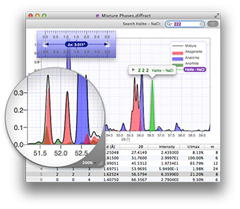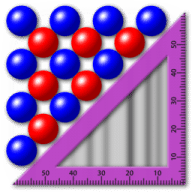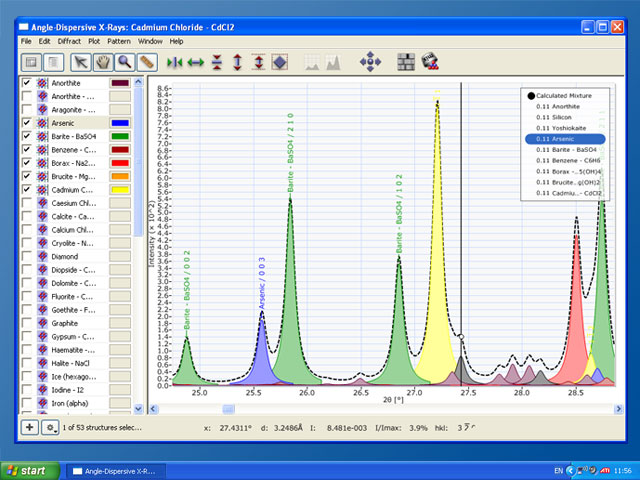

Predictions are given for resolution and relative image irradiance to guide experimenters in choosing the desired configuration for their experiments.
#Crystaldiffract demo series#
Here, a demonstration of the imaging capability for a series of MagLIF shots is presented.

A more » key component to achieving the design goals is to place the instrument inside the Z vacuum chamber within 2 m of the load, which necessitates a considerable amount of x-ray shielding as well as a specially designed, independent vacuum system. The multi-frame camera consists of a microchannel plate camera. We have a variety of imaging systems at Z, both time-integrated and time-resolved, that provide valuable x-ray imaging information, but no system at Z up to this time provides a combined high-resolution imaging with multi-frame time resolution this new diagnostic, called TRICXI for Time Resolved In-Chamber X-ray Imager, is meant to provide time-resolved spatial imaging with high resolution. The primary intended application is for diagnosing the stagnation behavior of Magnetized Liner Inertial Fusion (MagLIF) and similar targets. We have commissioned a new time-resolved, x-ray imaging diagnostic for the Z facility.

Strength and wavelength dependences of cross-talk can be entirely ascribed, via numerical simulations, to the incorrect retardance of achromatic wave plates. As applied to CAOS, observations of magnetic chemically peculiar stars of the main sequence show that the cross-talk from linear to circular polarization is smaller than 0.4% and that conversion from circular to linear is less than 2.7%. Since polarized and unpolarized standard stars are useless, we suggest a method to calibrate a high-resolution spectropolarimeter on the basis of the polarimetric properties of spectral lines formed in the presence of a magnetic field. Observations of unpolarized standard stars show that instrumental polarization is generally zero at 550 nm and can increase up to 3% at the other wavelengths. As is usual for high-resolution spectropolarimeters, CAOS is suitable to measure all Stokes parameters across spectral lines and it cannot measure the absolute degree of polarization. Linear and circular spectropolarimetric observations are possible by means of a Savart plate working in series with a half-wave and a quarter-wave retarder plate in the 376–850 nm range. This work is motivated by the need to perform measurements of important quantities in difficult experimental conditions, such as the axial magnetic field at stagnation in magnetized liner inertial fusion = from a single spectral line.
#Crystaldiffract demo code#
In parallel, we developed a ray-tracing code and are working to add the crystal reflectivity to instrument modeling codes, to help us interpret the spectra and to design spectroscopic and spectropolarimetric instruments.

We also found that the polarization-splitting planes in cubic crystals can be accessed in two crystal orientations, a property that can be used to decrease the clutter in polarized spectra. We demonstrated experimentally for the first time that crystals with cubic symmetry can be used as polarizing beam splitters. To increase the accuracy achievable, we investigated the possibility of measuring both orthogonal components of linear polarization simultaneously using a single crystal. The combination of notebook with navigation and drawing tools and sophisticated analyses provides the ability to annotate experimental results and analyses in a single location, rather than keeping your sequence analyses separate from you lab notes.X-ray spectropolarimetry is a diagnostics technique suitable for measuring intense electron beams and strong magnetic fields in hot, dense plasmas. Because you can predefine and store analysis parameters for any analysis to fit your needs, anyone in the lab will be able to obtain meaningful and consistent results, whether they are a novice just entering the lab, or an experienced researcher familiar with the analysis routines. Imagine having the ability to define an entire suite of analyses to be performed each time you have a new sequence, and to design custom style sheets which specify exactly how your output will look for each analysis.
#Crystaldiffract demo mac os x#
Requirements: Mac OS X 10.6 or higher - 32-bit File Size: 15.3 MB Gene Inspector 2.0 The Gene Inspector can perform many sophisticated sequence analyses, but this new software is much more than just another sequence analysis product.


 0 kommentar(er)
0 kommentar(er)
